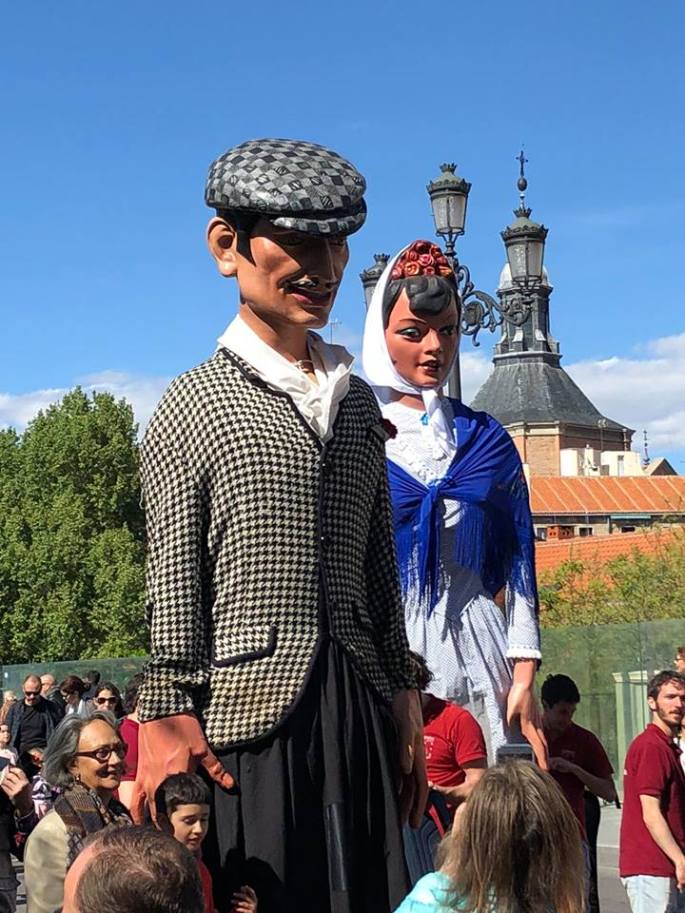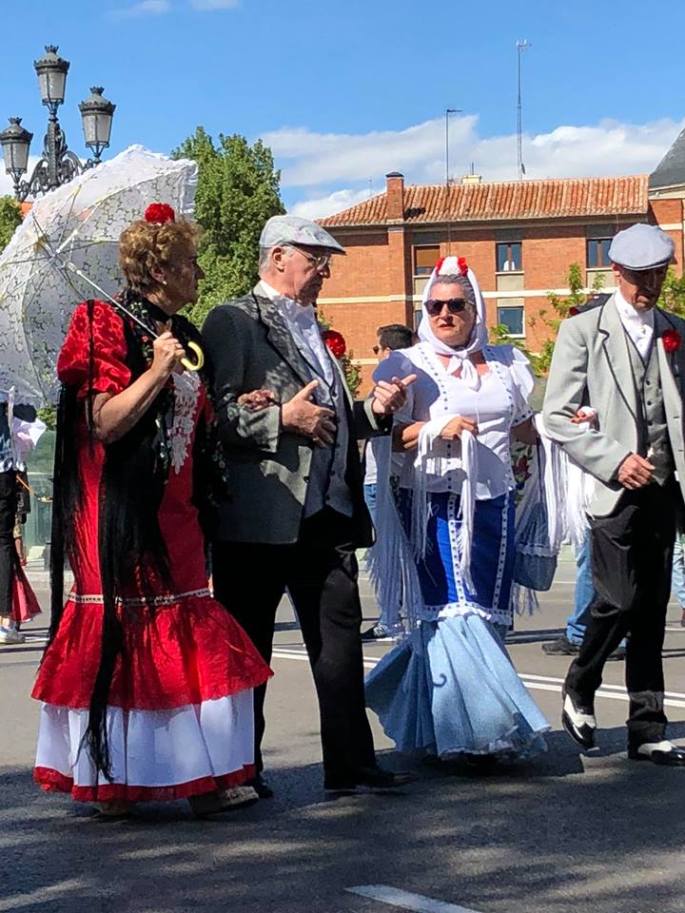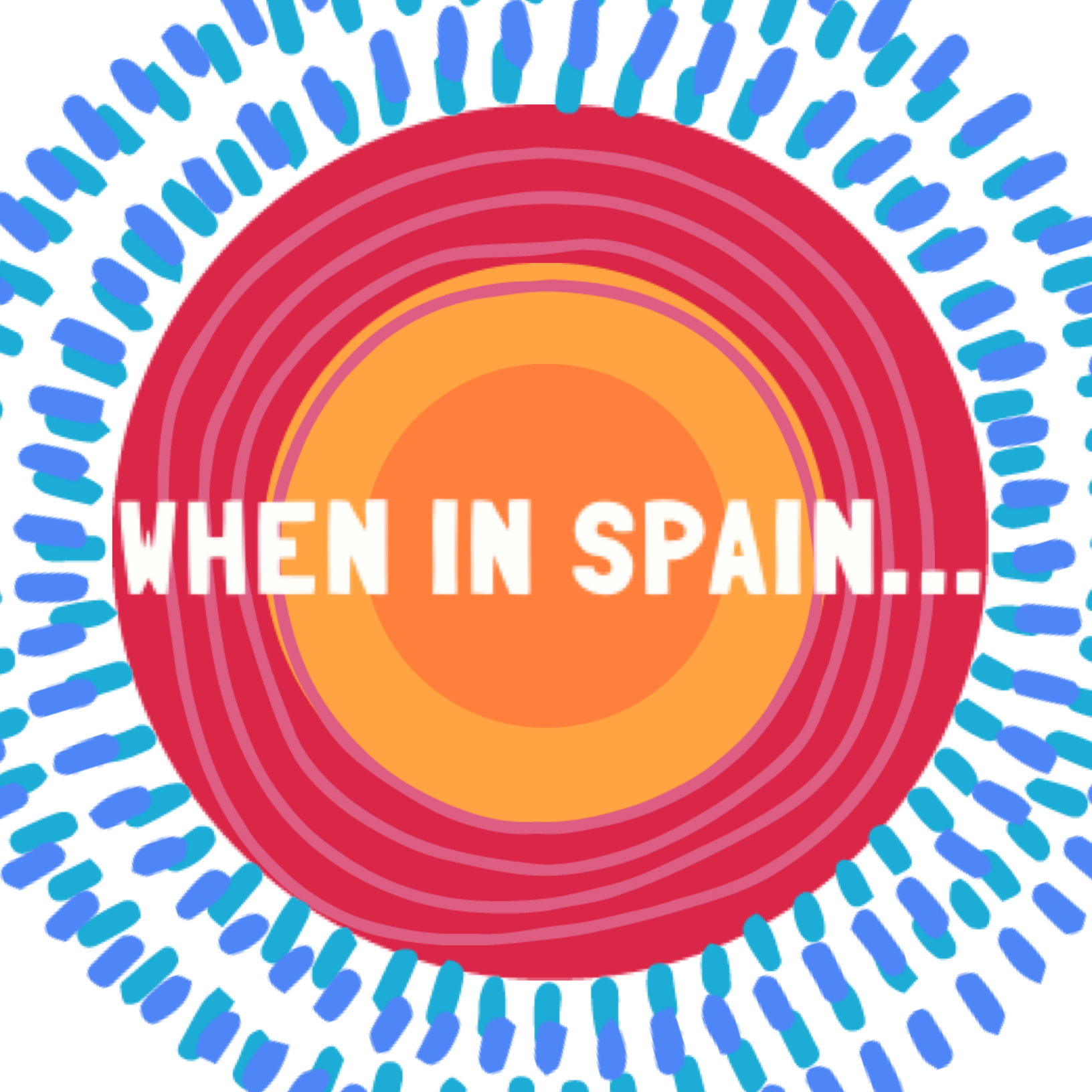Hola a todos!! In episode three of When in Spain I guide us around the Feria de San Isidro in Madrid and take in the sights, sounds and flavours. To hear all the festivities hit play on audio player above and immerse yourself in all things Feria!

What is a feria?
In short, it’s an annual festival that takes place in practically every town and city across Spain between Spring and Autumn. Each feria usually lasts around a week and celebrates local traditions, music, dance, food and some of them have religious connections, such as Madrid’s San Isidro.
If you’re thinking of the cliché of flamenco, girls in bright coloured figure-hugging dresses wearing flowers in their hair…


My advice for anyone who’s never been to a feria. Go! It’a raucous induction to the España profunda – deep Spain. In my opinion some of the most lively and colourful ferias are in Andalucía in southern Spain. If you’re thinking of the cliché of flamenco, girls in bright coloured figure-hugging dresses wearing flowers in their hair and jugs of Rebujito flowing like water, (Sherry mixed with lemonade) this is as close as it gets. The big ones in the south are in Seville, Malaga, Cordoba and Cadiz.

Other ferias
Of course, not all ferias are made in Andalucía. There are a few others which are well-known. Pamplona in the north of Spain has it’s San Fermín, the one where people get chased by bulls through the city’s narrow streets, usually resulting in more than few drunken guiris getting trampled. Valencia, on the east coast has Las Fallas, a deafening feria where towering fallas – cardboard and paper-mâché figures are burned to the ground and a daily explosive barrage of coordinated firecracker and fireworks displays called Mascletàs take place. Not for the faint-hearted. Bring your earplugs. Once was enough for me.
…and in Madrid, San Isidro
So where does that leave Madrid’s Feria de San Isidro? Meh. For me it falls short. Nada especial. I only say this because considering Madrid is the capital city, its feria is pretty low-key which surprises me considering Madrid is renowned for its buzzing nightlife and lively ambiente. That said, it certainly has a charm to it and a curious history.

San Isidro (Saint Isidore) is the Catholic Patron Saint of Madrid and the Patron Saint of Farmers. (1070 – 1130?) His full name is San Isidro el Labrador, Saint Isidore the worker of the land. He was born in Madrid in around 1070, to poor but very devout parents and spent his life as a farm hand for the wealthy landowner Juan de Vargas.

The miracles of San Isidro
Isidore married Maria Torribia, known as Santa María de la Cabeza and they had one son together. On one occasion, their son fell into a deep well but following the prayers of his parents, the water of the well miraculously rose to ground-level, bringing the child with it.
Another story recounts how he had the help of angels in the fields. Isidro used to attend Mass before going to work. One day, his fellow farm workers complained to the boss that Isidro always turned up late for work. His boss decided to take it upon himself to do some detective work and found Isidro busy praying in a local church while an angel was ploughing the fields for him. On another occasion, Isidro’s master saw an angel ploughing either side of him, making Isidro’s work equal to that of three of his fellow field workers.
Despite their humble lifestyle San Isidro and Santa Maria were well-known for their generosity and used to give food to the poor. An an act of kindness that is reflected in today’s feria when cocido madrileño – (Madrid stew) is given out for free.
Where to celebrate San Isidro?
In the podcast I started off in the Jardín de las Vistillas just off Segovia Street and a short walk from Madrid’s Royal Palace and Almudena Cathedral. This a park/square flanked by bars and restaurants where the procession of Gigantes y Cabezudos, giants and bigheads culminates, followed by bands and people dancing dressed in traditional dress or de chulapo/a.




 Then to Plaza de Isabel II right next to the capital’s opera house to watch ‘older’ couples dancing Chotis, a traditional country or folk dance. It’s believed that the dance originated from Bohemia in central Europe, somehow via Scotland hence the name Chotis which is a corruption of Scottish. In Madrid, chotis were danced for the first time in 1850 at the Royal Palace during a party organised by Queen Isabel II. Apparently it became so popular that Madrileños decided to make it their own.
Then to Plaza de Isabel II right next to the capital’s opera house to watch ‘older’ couples dancing Chotis, a traditional country or folk dance. It’s believed that the dance originated from Bohemia in central Europe, somehow via Scotland hence the name Chotis which is a corruption of Scottish. In Madrid, chotis were danced for the first time in 1850 at the Royal Palace during a party organised by Queen Isabel II. Apparently it became so popular that Madrileños decided to make it their own.


The classic place to set-up camp for San Isidro is in the Pradera de San Isidro a huge hillside park a hop skip and a jump over the Mazanares ‘River’. Here you’ll find more of what I consider a feria atmosphere. The park is home for the week to huge live music stages, endless rows of tents selling food, booze and traditional dress. There’s also a huge fairground, a must for any feria. It’s a great place to come and spend a whole day watching the people go by and taking in the eclectic mix of music being performed. Also there are some great views to be had from the park, especially when the sun is setting over Madrid.


Keep an eye out for Rosquillas that I mention in the podcast. I kind of crumbly donut in various flavours. These are traditionally eaten around San Isidro and can be found in food tents and bakeries around the city. A bit dry for my tastes.

Practicalities
San Isidro takes place every year during the week running up to the 15th of May, the day San Isidro is believed to have died.
There are many other locations and events that take place around Madrid other than the ones I have mentioned. These include concerts and dancing in Plaza Mayor, The Retiro Park, The Debod Temple, Plaza España, Plaza Oriente and many more further outside the centre in the various barrios.
Here’a a link to the 2018 San Isidro event guide.
Also, check out Madrid’s official tourism page for up to date info on subsequent ferias. In 2019 the feria will take place 10th -15th May.

